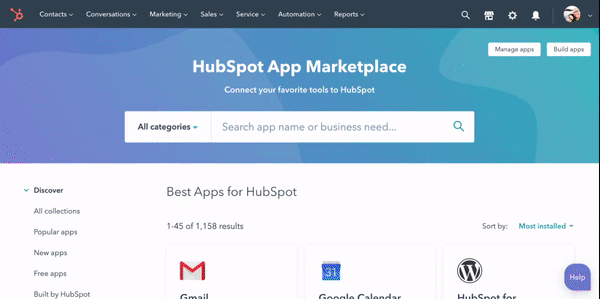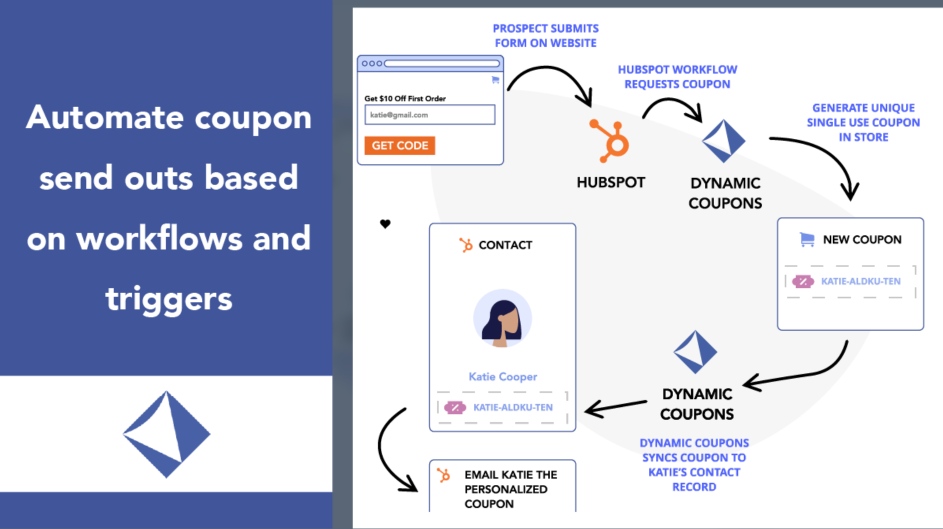Great technology will not grow your business by itself — but lacking great technology will certainly hold you back.
As a tech advisor to clients, I’ve seen it all: sales teams using physical bulletin boards to track deals, writing meeting notes in a notepad that no one else can see, and even using customer relationship management (CRM) tools that have changed little since the early 2000s.
But what I mostly see is this: some motley combination of spreadsheets and limited, industry-specific platforms that don’t work well together and, ultimately, hold your team back.
Think about it this way:
Each month, how much time does your team spend doing tasks that could be eliminated if you just had a better technology stack?
For businesses in retail, this presents a particularly difficult dilemma.
Many marketing teams we work with want to use HubSpot for automation, deal tracking, and analytics, but they don’t know how viable HubSpot can be for the retail industry.
Having worked with dozens of companies facing this choice, I’ll use this article to explain how I help them. Including:
- How HubSpot can boost your retail business
- How to get to know the HubSpot App Marketplace
- The top integrations you can use to unite your tech stack
How HubSpot can boost your retail business
Retail businesses come in all shapes and sizes.
I work with several straight e-commerce businesses. Others are strictly brick and mortar. Others still are a convoluted hybrid (think: a customer starts a search online, then schedules a meeting in a showroom, then completes the purchase either in-person or online).
To manage their inventory, schedule their meetings, and keep in touch with customers, these businesses use a variety of tools and platforms.
And to be clear, HubSpot is not a great solution to help you with these essential tasks. As a result, they’re often hesitant to add HubSpot, which is one more tool that won’t necessarily replace the ones they're already using.
But HubSpot can do many things that these other tools can't — and you can integrate them with HubSpot to bring everything together.
For example, if you use Shopify to manage your inventory, you’re still going to need a tool that automates your marketing emails, tracks website engagement, and organizes your sales pipeline.
But it doesn't stop there.
What HubSpot can do that your retail tech can’t
HubSpot offers a fleet of features to enhance your marketing, organize your sales, and provide you with the data you need to make better decisions. This is why we recommend our clients use it.
While this is by no means an exhaustive list, HubSpot can help you by:
- Hosting blog, video, and downloadable content
- Hosting your website
- Sending marketing emails (scheduled and automated)
- Capturing leads using forms (standard and slide-out forms)
- Creating dedicated landing pages to download premium content
- Using automation for lead nurturing (through email)
- Organizing all contact data in its CRM
- Tracking website engagement for each piece of content (pages viewed, videos watched, content downloaded)
- Tracking all sales activity on each contact record (meetings booked/completed, calls, emails, notes, deals closed)
- Improving your sales process (by using email templates, tracked documents, personal meeting links, etc.)
- Integrating with many other tools (SMS tools, booking apps)
- Streamlining sales reporting (time to close, forecasting, sales activity per week, etc.)
- Making Marketing reporting easier and more intuitive
- Providing return on investment (ROI) reporting for all marketing activities
The last point, “Providing ROI reporting” is what other platforms tend to lack.
While others can do a couple of these tasks well, the fact that HubSpot can do all of these allows companies to collect data throughout the entire customer’s journey to report on ROI and what is working.
Even if you love your current set of tools, HubSpot will help you do what you do better. And it doesn’t have to be an either/or choice. Chances are, everything you use currently will integrate smoothly with the HubSpot platform.
Integrating your retail tech stack with HubSpot
The HubSpot App Marketplace offers more than 1,500 integrations with popular apps and platforms, ranging from email tools to data analysis.

Some integrations are built by HubSpot’s team of engineers, including integrations with Gmail, Google Search Console, and Facebook Ads.
Others come from other platforms, such as integrations with Hotjar, Calendly, or WooCommerce.
Still others are built by third-party developers.
You can search, sort, and filter apps. Each app allows you to see screenshots, take a video walkthrough, read reviews, and check out pricing before committing.

If you’re rolling your eyes thinking of another tool or platform you’ll need to learn, don’t worry.
HubSpot makes it easy: with free online learning materials, a thriving community of users, and step-by-step directions to integrate the rest of the software you use.
Top HubSpot integrations to unite your retail tech stack
In retail, you likely use a variety of tools. Here are some of the most common that seamlessly integrate with HubSpot:
- Scheduling: Calendly
- Inventory and e-commerce management: Shopify, WooCommerce
- SMS: Sakari
- Local business support: Podium
(Note, all videos below come from the HubSpot App Marketplace and belong to the creators.)
Scheduling tools: Calendly
Calendly helps you schedule meetings with prospects.
Here’s a walkthrough of Calendly’s HubSpot integration:
Ecommerce inventory management: Shopify, WooCommerce
HubSpot’s integration with Shopify is one of its most popular. According to HubSpot, this integration allow you to:
- Connect your Shopify store to HubSpot
- Analyze your Shopify data in HubSpot (default reports include average order value, lifetime order value, abandoned cart recovery, and more)
- Automatically sync products, contacts, and orders (seen as “deals” in HubSpot) from Shopify to HubSpot
- Segment contacts based on products (Marketing Hub Starter, Professional, or Enterprise only)
- Automate ecommerce campaigns (Marketing Hub or Sales Hub Professional or Enterprise only)
Here’s an overview:

The WooCommerce integration allows you to create and send discounts directly from HubSpot Workflows:

Here’s a walkthrough to get you started:

Connecting with prospects through SMS: Sakari
Sakari allows you to connect with your audience through text messages. Here’s what Sakari’s integration with HubSpot looks like:
Local business support: Podium
Podium helps your local business communicate with your audience, from first touch to payments.
Here’s an overview of the HubSpot integration with Podium.
Using HubSpot to grow your retail business
Adding to your tech stack can be intimidating. Do you really need another tool, another platform, and another line item in your monthly budget?
If you’re a retail or e-commerce business, you definitely need a CRM to keep your contacts organized so you can market to them — whether by sending promotions, reminding them about the shopping cart they abandoned, or tracking their traffic through your blog.
The tools you have right now can’t do that. HubSpot will integrate smoothly with your other tools, whether they are scheduling, inventory, messaging, or other types of solutions.
Take some time to visit the HubSpot App Marketplace to see how HubSpot won’t be one more thing you need to figure out — it will be the one thing you use to help you figure out everything else.
And if you’re not sure how to do that, schedule a time to talk to IMPACT. We help businesses use technology better to connect with customers and drive sales



